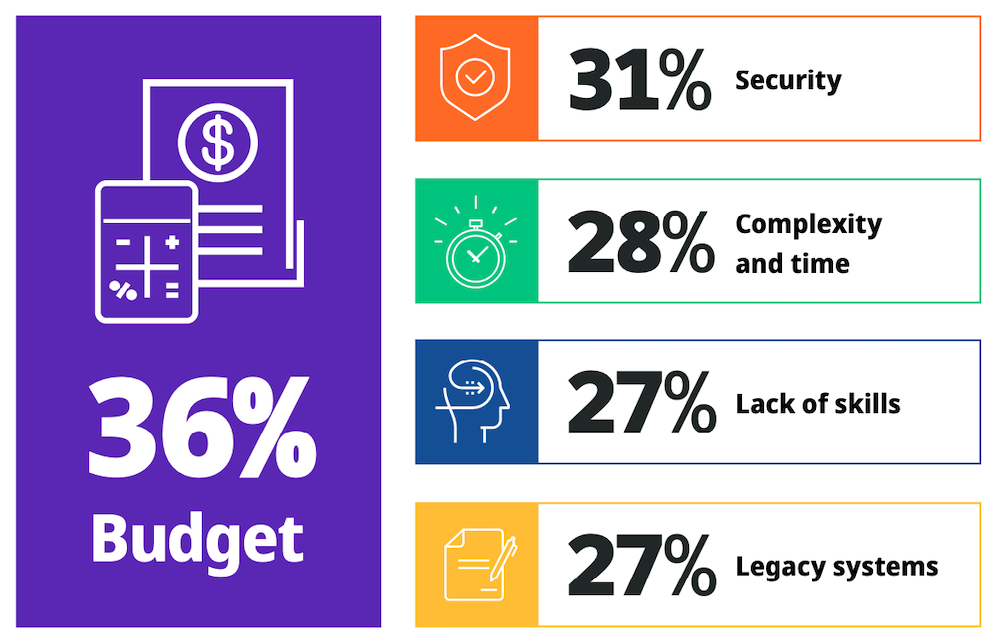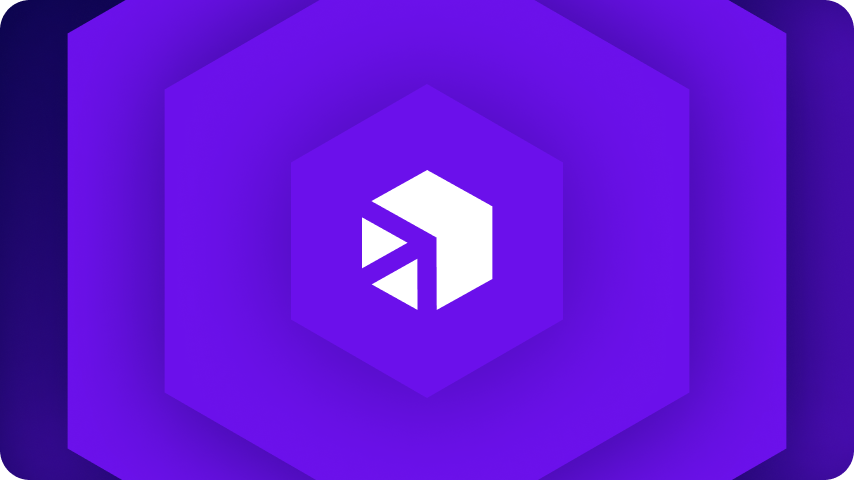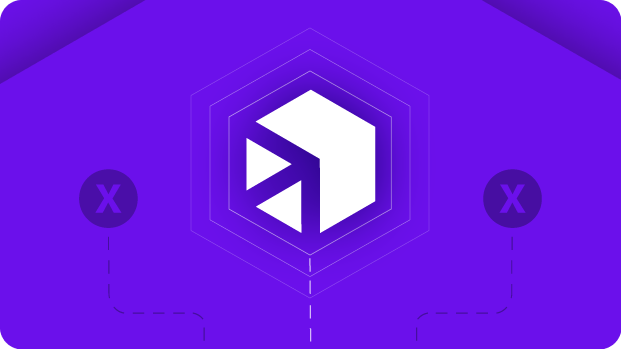November 16, 2022
Anos de evolução e inovação tecnológica, sem foco em abordagens simplificadas, deixaram muitas empresas dependentes de uma arquitetura de TI corporativa excessivamente complexa. Sistemas legados, dados fragmentados e soluções remendadas para problemas urgentes reduziram a agilidade e dificultaram a capacidade das empresas de responder rapidamente às mudanças do mercado.

Mas há uma solução melhor.
É possível simplificar sua arquitetura complexa com o auxílio de ferramentas modernas, como a integração de sistemas de TI.
>> Agende uma demonstração personalizada com nossa equipe de especialistas e veja como o iPaaS da Digibee trará eficiência ao seu negócio.
Quando propósito e função não se alinham
O propósito do setor de TI é viabilizar processos de geração de receita ou entrega de produtos, o que torna essencial o alinhamento com os objetivos de negócio. No entanto, muitas vezes, os departamentos de TI são criticados por não atenderem às expectativas da organização em relação a prazos, funcionalidade, desempenho ou segurança, devido a um acúmulo de tarefas.
Para o restante da empresa, o que se vê é apenas a ponta do iceberg do que os arquitetos e desenvolvedores de sistemas criaram ao longo dos anos, à medida que responderam a novas demandas e expectativas. A equipe de TI implementou sistemas e tecnologias adicionais para atender às necessidades em constante mudança – o que resultou em um imenso legado técnico , que requer profissionais especializados para ser mantido.
E é aí que começam os problemas.
A complexidade da arquitetura de TI empresarial, somada à rápida evolução tecnológica, deixa as organizações incapazes de acompanhar as mudanças. A queda na receita leva a cortes no orçamento de tecnologia, e as empresas ficam presas aos seus sistemas legados, sem conseguir adotar novas soluções como cloud, IoT, machine learning e inteligência artificial – tecnologias indispensáveis para competir em um mundo cada vez mais digital.
Simplificando a arquitetura corporativa de TI
Uma arquitetura de TI sobrecarregada precisa ser ajustada antes que seja possível desenvolver uma estratégia para simplificar seus sistemas e adotar novas tecnologias. Antes de começar a fazer ajustes, considere o seguinte:
- Os negócios não podem parar. Por mais complexa e ultrapassada que seja sua estratégia atual de arquitetura de TI, é necessário encontrar um caminho de transição que permita que os sistemas legados continuem funcionando enquanto soluções mais modernas e enxutas são desenvolvidas sobre eles.
- Não é possível ser ágil com tecnologia obsoleta. Sistemas antigos que não suportam novos modelos de desenvolvimento e operação irão limitar sua capacidade de competir com empresas nativas digitais. Uma arquitetura de TI empresarial moderna é essencial para criar um sistema capaz de responder rapidamente às mudanças do mercado.
Seus problemas (e sistemas) podem ser complexos, mas as soluções devem ser simples. Antes de simplificar as complexidades de sua estratégia de arquitetura de TI, é fundamental identificar e isolar os desafios. Soluções diretas e objetivas são mais eficientes para eliminar a confusão e permitir avanços.
Integração: tornando o complexo simples
Por muitos anos, integrar dados e sistemas exigia uma série de tecnologias, protocolos e componentes. A integração era um problema intrincado que demandava especialistas altamente qualificados e um tempo significativo para concluir o processo extenso.
Conectar apenas dois sistemas envolvia uma infinidade de ferramentas, incluindo barramentos de serviço, gateways de API e ferramentas para execução, monitoramento e solução de problemas. Cada engrenagem da máquina dependia da coordenação entre muitos profissionais:
- Analistas para examinar os dados que seriam transferidos
- Especialistas em redes para criar as conexões necessárias
- Profissionais de segurança para proteger contra violações ou perdas
- Desenvolvedores para criar códigos e supervisionar a execução
Resumindo, era um processo longo e complexo que ia muito além de simplesmente transferir dados de um ponto a outro. No entanto, identificar e isolar as dificuldades permite remover os obstáculos.
- Automação possibilita projetar, executar e operar integrações sem interromper os sistemas de origem ou destino
- Ferramentas no-code e low-code simplificam o desenvolvimento de integrações
- A nuvem elimina a complexidade associada a data centers, garantindo o consumo apenas da capacidade computacional necessária
Aproveitando uma arquitetura de TI empresarial que permite isolar complexidades, você pode construir uma plataforma fácil e intuitiva de usar. A tecnologia deve ser um facilitador, não um obstáculo. E hoje, mais do que nunca, as equipes de TI têm o poder de aparar os sistemas legados complexos para tornar as operações mais simples, ágeis e eficientes.
O que está bloqueando a integração do sistema de TI?
Dados recentes do Relatório – 2022 State of Enterprise Integration indicam que apenas 7% das empresas concluíram com êxito a tarefa de reduzir os sistemas de TI legados e implementar uma solução de integração. Embora a grande maioria dos entrevistados tenha dito que sua organização se beneficiaria com a integração, a execução continua baixa. As razões apresentadas são variadas:

Soa familiar? Todos esses desafios são consequências diretas da falta de alinhamento entre propósito e função – um efeito colateral das soluções remendadas que muitas organizações adotaram para lidar com demandas e tecnologias em constante mudança.
A Digibee facilita a integração
Na Digibee, entendemos os desafios que as empresas enfrentam ao dependerem de infraestruturas legadas. Nosso iPaaS oferece a flexibilidade e a agilidade necessárias para competir no mundo digital de hoje.
Nossa solução inclui suporte abrangente, sem exigir compromissos prolongados ou grandes investimentos iniciais. Além disso, nosso modelo inovador reduz significativamente o tempo necessário para desenvolver e implementar integrações, permitindo que sua empresa colha os benefícios mais rapidamente.
Para saber mais sobre como podemos ajudá-lo a simplificar a complexa arquitetura corporativa de TI, solicite uma demonstração para que possamos discutir suas necessidades.








